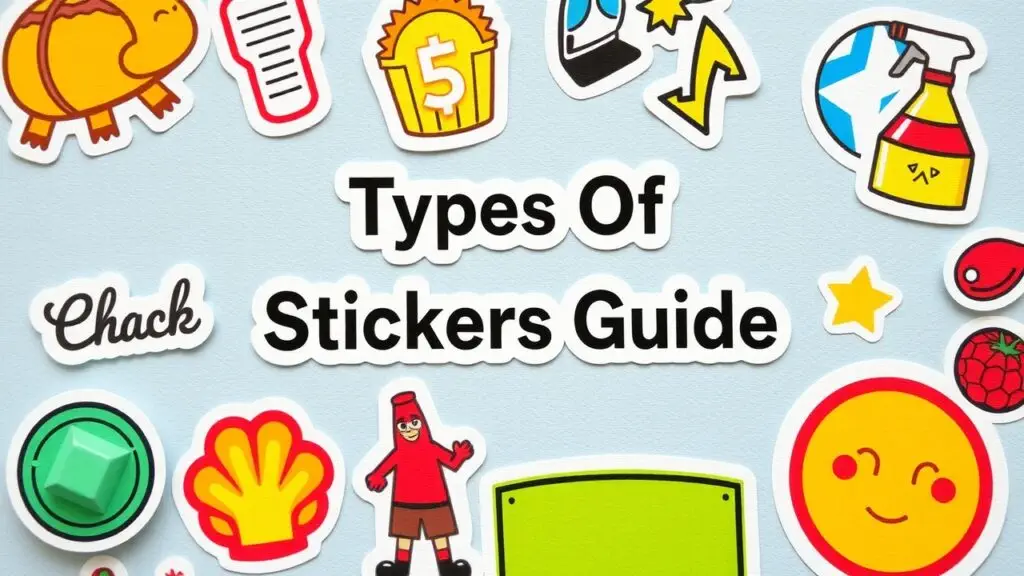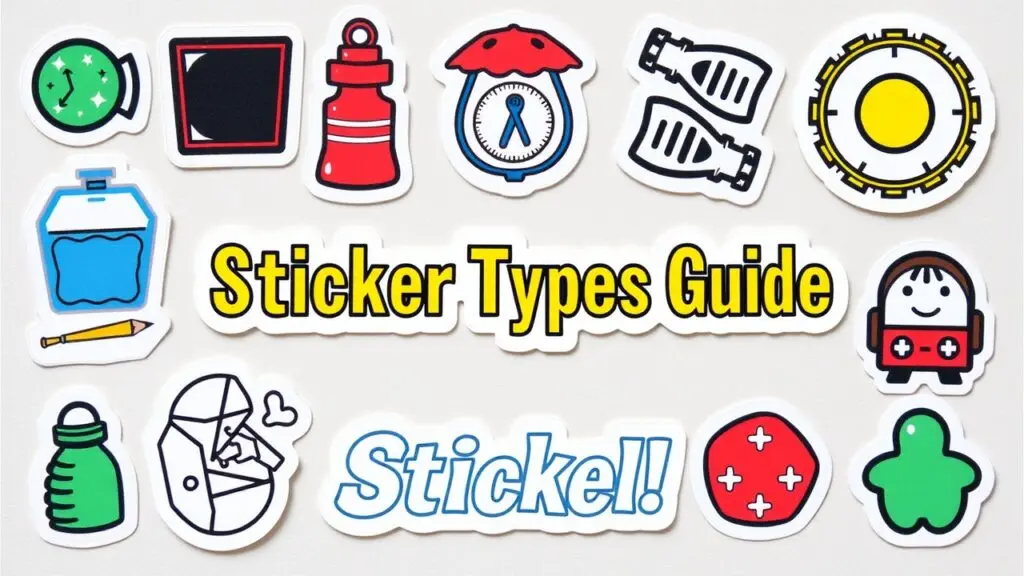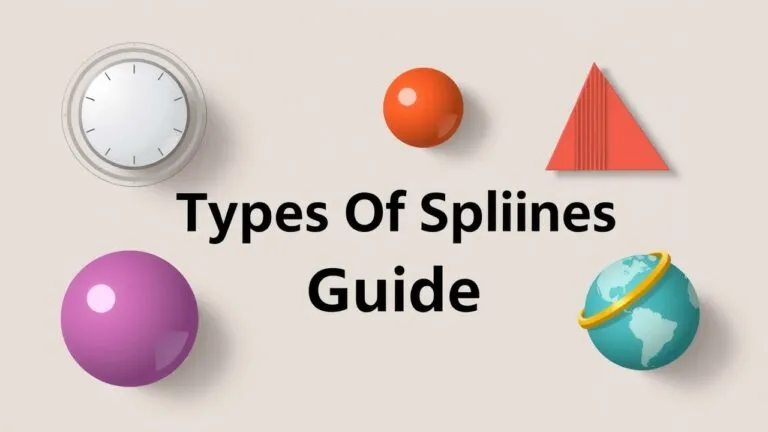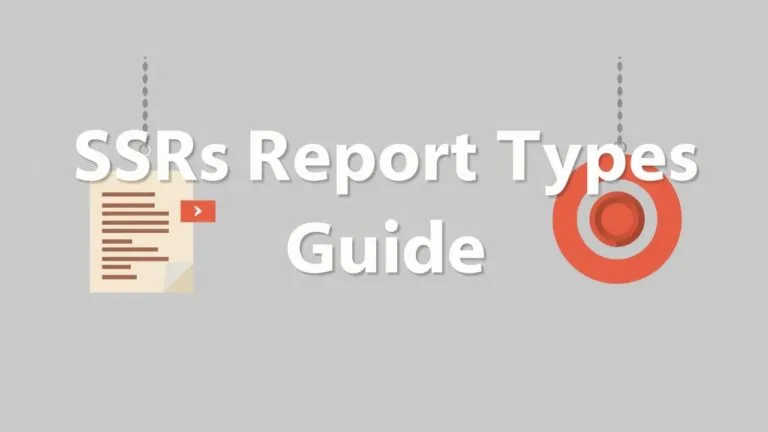Discover various sticker types, materials (vinyl, paper), printing methods, and uses. This guide covers everything from simple labels to custom holographic designs.
What Are Stickers?

Stickers are sticky labels or designs that stick to surfaces. They come in different kinds like vinyl stickers, paper stickers, and custom printed ones. Vinyl stickers are tough and can handle the weather, making them great for outside use. Paper stickers are usually cheaper but might not last long when it rains. Custom stickers let people or businesses create special designs just for them. Bumper stickers are popular for putting messages on cars. Window decals are also common and used for advertising or decorating glass.
Why Understanding Sticker Types Matters
Knowing about different sticker materials is key when picking the right one for your needs. Durable stickers made from vinyl resist water and stick well over time, making them suitable for outdoor places where they might get wet. Removable stickers can be taken off easily without leaving sticky stuff behind, which is perfect for temporary events or promotions. Permanent adhesive stickers stay in place longer but might need careful thought if you want to change designs often.
Overview of What This Guide Covers
This guide covers many parts of sticker design and how to use them. We will look at different sticker printing services available now and talk about popular types like die-cut and kiss-cut stickers. Each type has its own perks based on how you want your design to look. With this knowledge, you’ll be better ready to choose the right option for personal projects or business branding.
Sticker Materials Explained
Vinyl Stickers
Vinyl stickers are a top pick for both personal and business use. They are super durable and flexible. Made from PVC, these stickers can handle various weather conditions. This is why they work well for outdoor use. You can call them waterproof vinyl stickers since they resist moisture, UV rays, and fading. You’ll often find them on bumper stickers, signs, and promotional materials that need to last.
One great thing about vinyl stickers is how well they stick to many surfaces like metal, plastic, glass, and wood. They might cost more than paper options, but their quality makes up for it. If you want vinyl stickers for outdoor use or busy places, choose ones labeled as weatherproof or durable.
Paper Stickers
Paper stickers are an affordable option for many projects like packaging labels and indoor decorations. They’re usually made from coated paper with a matte or glossy finish. These types of stickers have bright colors but don’t hold up well in wet conditions compared to vinyl ones.
These stickers are perfect for temporary uses like promotions or events where you don’t need them to last long. But remember, paper stickers aren’t the best choice in damp places since they might smudge or peel off. For businesses that want budget-friendly options without losing too much quality, indoor-like product labeling’s paper sticks around as a solid choice.
Holographic Stickers
Holographic stickers are unique because of their shiny designs that reflect light in cool ways. These custom designs catch the eye and add depth that makes them awesome for promotional items aimed at grabbing attention. Many crafters and small businesses love holographic finishes because they really boost visual appeal.
However, these types of stickers work best indoors since staying outside too long might dull their shine unless treated with special coatings that protect them from the environment.
Transparent Vinyl Stickers
Transparent vinyl stickers give you creative freedom while letting what’s behind them show through. Their clear backgrounds let you place them on surfaces like windows or clear containers without blocking the view, which is perfect when branding needs to be visible but not overwhelming.
These clear options also allow for detailed designs since die-cut shapes highlight intricate artwork while being versatile across different uses from home decor projects to professional marketing campaigns targeting specific audiences effectively!
Waterproof Coated Paper & Vinyl Options
Water-resistant options mix the benefits of standard paper with better durability found in synthetic materials like vinyl. By adding special coatings during production, makers create products that resist moisture damage while keeping the affordability usually seen only with regular paper!
This group includes waterproof coated paper as well as specialized versions made entirely from water-resistant plastics. They ensure maximum protection in different environments, whether used indoors or outdoors! Good choices include labels needing extra strength against spills or accidental contact to keep your brand looking good throughout its use, especially on items like bottles and jars—making sure customer experience stays positive!
How Are Stickers Categorized?
Application Method:
Stickers can be sorted by how they are applied. This includes different adhesives and materials. Knowing these types helps you pick the right sticker.
- Adhesive-backed Stickers: These have a sticky back. They can stick permanently or come off easily. It’s important to choose between permanent and removable options based on how long you need them.
- Magnetic Stickers: These stick to metal surfaces without any glue. They are great for temporary displays or signs since you can move them around easily.
- Static Cling Stickers: These use static electricity, not glue, so they’re simple to put up and take down. They won’t damage surfaces or leave sticky bits behind, making them perfect for windows or smooth spots.
Finish Type:
The finish on a sticker changes how it looks and lasts:
- Matte Finish vs Glossy Finish: Matte stickers are non-reflective, which works well for calm designs. Glossy stickers boost colors and make images more vibrant.
- Laminated Options: Laminating offers extra protection against scratches and bad weather. This is really useful for outdoor stickers that need to stand up to the elements.
Shape/Cut Style:
Stickers also vary by their shapes and cutting styles:
- Die-Cut Stickers: These are cut into special shapes according to the design. They grab attention, making them good for branding since they look unique.
- Kiss-Cut Stickers: These are cut individually but stay on a bigger sheet. This way, users can peel off single designs without messing things up.
- Roll Label Stickers: Packaged in rolls, these stickers make it easy to apply many at once, which is perfect for product labels.
Additional Considerations
When picking sticker types from these categories, think about where you’ll use them (indoor vs outdoor), what kind of look you want (finish type), and if you need custom cuts. Understanding these types helps you decide when designing or buying your next set of labels or decals.
Popular Printing Methods Used in Sticker Production
Sticker production uses different printing methods, each with its own benefits. Knowing these methods helps you pick the right stickers for your needs.
Digital Printing
Digital sticker printing is a modern way to create stickers. It lets you make custom sticker printing without much setup. You can get printed stickers from digital files that come from computer designs. This is perfect for small runs or just a few unique stickers.
A big plus of digital printing is how flexible it is. It works well for both small stickers and large format stickers. Plus, sticker design software makes it easier to create your designs. On the downside, while this method gives great color accuracy and detail, it might not be the cheapest option for big orders.
Screen Printing
Screen printed stickers are famous for their bright colors and long-lasting quality. This traditional method pushes ink through a mesh screen onto the material. It’s great for making bulk stickers or wholesale orders where you need consistent quality.
The main benefit of screen printing is that it produces vibrant colors on different surfaces at a lower cost per unit when ordered in high volumes. But setting up screens can take some time, so it’s not as economical if you’re only making a few pieces.
Offset Printing
Offset printing is another popular choice for high-volume production of offset printing stickers. This method uses plates to transfer ink onto paper or vinyl materials, ensuring consistent quality across large batches.
This technique works best when you need thousands of identical stickers quickly. While offset printing requires more setup than digital or screen methods, it’s efficient and keeps color fidelity over long runs. However, it’s not ideal for smaller orders due to the initial setup costs.
Here’s a quick look at these methods:
| Printing Method | Best For | Advantages | Disadvantages |
|---|---|---|---|
| Digital Printing | Small runs/custom designs | High-quality prints; versatile | Higher cost per unit at large volumes |
| Screen Printing | Bulk orders | Vibrant colors; cost-effective at scale | Time-consuming setup |
| Offset Printing | Mass production | Consistent quality; efficient | Not ideal for small quantities |
Understanding these popular sticker production methods helps you make better decisions about which type fits your project based on how many you need and what results you want.
Choosing the Right Sticker Material
When picking a sticker material, you gotta think about a few things. First, what’s your intended use? Stickers can be for indoor or outdoor use. Indoor stickers usually don’t need to be super durable and can be made from paper or vinyl. On the other hand, outdoor stickers should handle tough weather and should ideally be waterproof and UV-resistant.
Next up, consider durability needs. If you want long-lasting stickers that won’t fade, go for materials like vinyl or BOPP (Biaxially Oriented Polypropylene). Your budget matters too; paper stickers are usually cheaper but may not last as long as vinyl ones. Finally, think about how the sticker looks—holographic and transparent options can add some flair to your design.
Examples of Sticker Types Best Suited for Different Applications
Different stickers are better for different purposes. Here are some examples:
- Product Labels: These often use clear BOPP or vinyl to withstand moisture in food packaging.
- Bumper Stickers: Usually made from heavy-duty vinyl because they face harsh outdoor conditions.
- Window Decals: These typically use transparent materials so they stick well without blocking visibility while looking professional.
Understanding these aspects helps small business owners and hobbyists make smart choices based on their needs.
Sticker Shapes, Sizes, and Finishes

Stickers come in different shapes, sizes, and finishes. This variety allows for customization that fits various needs. Understanding the options can help you choose the right sticker for your project.
Die-Cut Stickers
Die-cut stickers are cut to follow the exact shape of your design. This feature gives you creative freedom and makes your stickers unique. You can find these in materials like vinyl or paper. They work great for everything from promotions to decorative items. Custom die-cut stickers can really make your brand or personal message pop!
Kiss-Cut Stickers
Kiss-cut stickers are similar to die-cuts but stick to a larger backing sheet. This means you can peel them off easily while keeping a neat presentation. They are perfect for crafters and planner lovers because they let you grab one sticker at a time without fuss.
Roll Label Stickers
Roll label stickers are an efficient choice for bulk labeling. They are perfect for packaging or product identification in stores. These stickers come on rolls, making them easy to apply quickly. Small business owners love roll labels because they save time during busy hours.
Sticker Sheets
Sticker sheets have multiple designs printed on one page. You can peel each sticker off individually when needed, which helps keep things organized. These sheets are popular among planners and scrapbook fans who enjoy having many designs at their fingertips without the mess.
Common Shapes
Stickers are available in several common shapes:
- Circle labels
- Square labels
- Rectangular stickers
- Oval stickers
You also have options for custom shapes, allowing for more creativity based on what you need—like logos or fun decorations for events.
Finishes
Choosing a finish can affect how your sticker looks and lasts:
- Matte Finish Stickers: These have a non-reflective surface that works well for subtle designs.
- Glossy Stickers: These have shiny surfaces that make colors vibrant and eye-catching; they are great when visibility matters.
The right combination of shape and finish can make your project stand out while fulfilling its purpose!
Sticker Application and Best Practices
Surface preparation for optimal adhesion
To get your adhesive stickers to stick well, you need to prepare the surface first. Start by cleaning the area where you want to place the sticker. Use a mild soap mixed with water or rubbing alcohol to wipe away dirt, grease, and dust. This step is important because a clean surface helps the adhesive bond better.
After cleaning, make sure the area is completely dry before you put on your sticker. If there’s moisture, it can weaken the stickiness and lead to peeling later. Stickers usually work best on smooth surfaces like glass, metal, plastic, or painted wood since these materials give better adhesion than rough or porous surfaces.
Application techniques to avoid bubbles and wrinkles
Applying stickers without bubbles or wrinkles takes some care. Start by lightly placing the sticker where you want it without pressing it down hard. Once you’re happy with the position, press down one edge and slowly smooth it out toward the other side.
Using a credit card or another flat object can help push out air pockets as you go along. If bubbles do form during application, carefully lift that part of the sticker and reapply it while smoothing it down again.
For removable stickers made for easy repositioning, follow these steps but don’t stretch them too much while applying; stretching could distort their design.
Tips for removing stickers without leaving residue
When it’s time to take off your stickers, whether they’re reusable or just need replacing, be gentle so you don’t leave any sticky residue behind. Start by lifting one corner of the sticker using your fingernail or a plastic scraper tool.
If the sticker is stubborn, use a hairdryer set on low near its edges; heat softens adhesives, making it easier to remove. After you’ve taken off the sticker completely, if there’s still residue left:
- Apply rubbing alcohol onto a cloth.
- Gently rub over any leftover stickiness until it’s gone.
- Wipe clean with soap and water afterward.
This method keeps your surfaces looking good while getting rid of any mess.
Storage recommendations to maintain sticker quality
How you store your stickers matters for keeping them in good shape! Different types of stickers like waterproof ones for outside use versus decorative indoor designs made from materials like vinyl paper should be stored differently.
Whenever possible, keep unused stickers in their original packaging; this protects them from dust that might harm their adhesive later on! Also, keep them out of direct sunlight since UV rays can fade colors over time and hurt overall quality.
- Consider putting them in airtight containers if humidity changes a lot in where they’re stored.
- Avoid placing heavy items on top of each other because pressure can bend them and cause damage before they’re even used!
By sticking to these guidelines about how to apply and store stickers based on their specific types, you’ll make sure they last longer and look great for every project!
Frequently Asked Questions About Types of Stickers
What are BOPP stickers?
BOPP stands for Biaxially Oriented Polypropylene. These stickers are waterproof and durable. They are great for product labels and packaging.
What are the advantages of clear BOPP stickers?
Clear BOPP stickers offer a transparent look that highlights surfaces beneath them. They work well for labeling products while maintaining visibility.
How do permanent adhesive stickers differ from removable ones?
Permanent adhesive stickers bond strongly to surfaces, making them difficult to remove. Removable stickers can be taken off easily without leaving residue.
What sticker printing techniques are popular?
Digital printing, screen printing, and offset printing are common methods. Each technique suits different quantities and quality needs.
How do I choose the right sticker size?
Consider the intended use and visibility when selecting a size. Larger stickers catch attention, while smaller ones fit neatly on items like jars or bottles.
What finishes are available for stickers?
Stickers come in matte, glossy, and laminated finishes. Each type provides unique visual appeal and durability.
Explore Sticker Types
- Types of Sticker Paper: Choose paper based on application needs.
- Sticker Shapes: Explore options like round, square, or custom shapes.
- Eco-Friendly Stickers: Select biodegradable materials for sustainability.
- Sticker Applications: Consider indoor vs outdoor uses for optimal performance.
- Sticker Removal Tips: Use heat or adhesive removers to avoid residue.
- Promotional Stickers: Utilize custom designs to enhance marketing efforts.
- Sticker Design Inspiration: Seek ideas from online platforms or local artists.
- Custom Label Stickers: Create personalized labels for products or events.
- Unique Stickers: Explore options that feature creative designs or messages.
- Sticker Books and Packs: Organize collections of themed or decorative stickers.
These keywords can enhance understanding of various sticker types and their applications.
Related Topics
- types of stickers
- types of sticker materials
- types of sticker finishes
- types of sticker shapes
- types of sticker applications
- types of sticker adhesives
- types of sticker printing methods
- types of sticker paper
- types of custom stickers
- types of waterproof stickers
- types of vinyl stickers



Types of Stickers: A Complete Guide